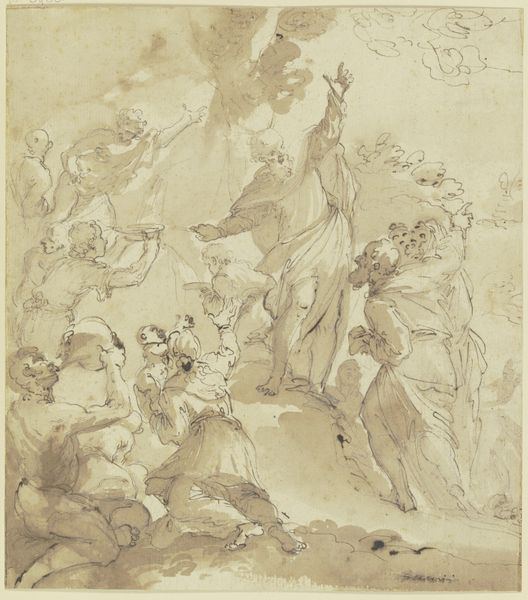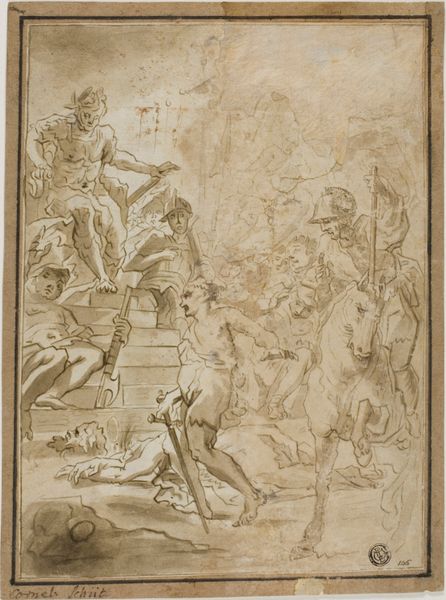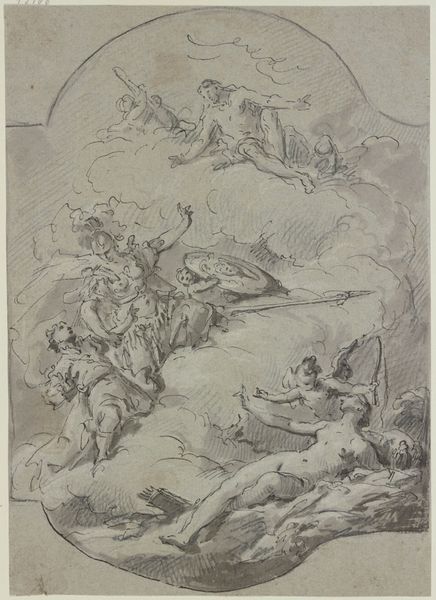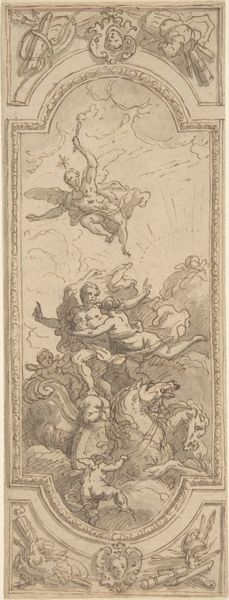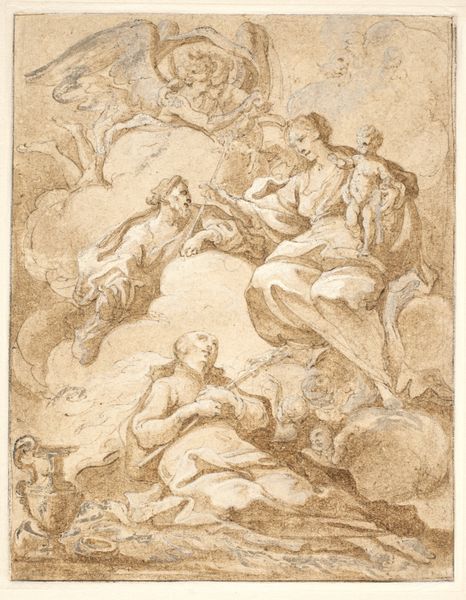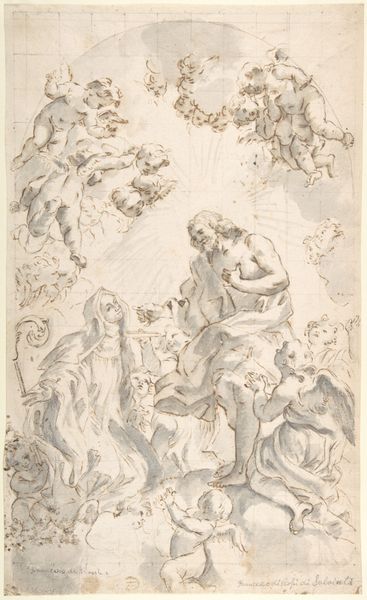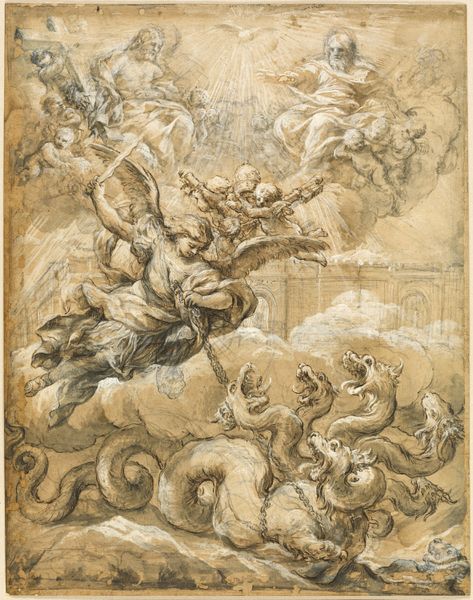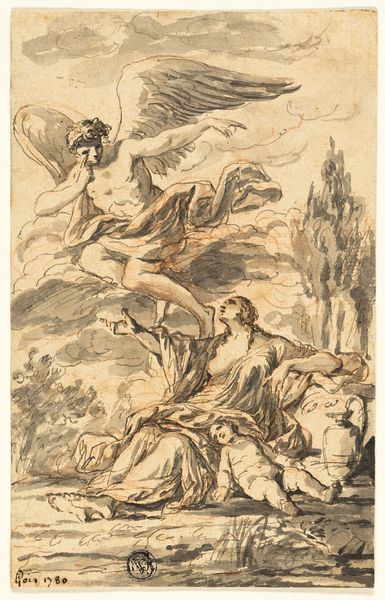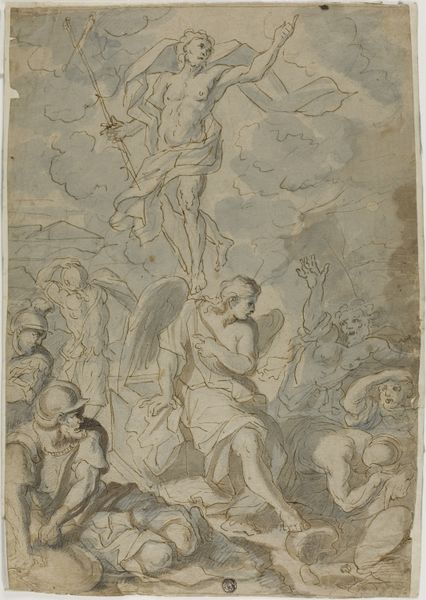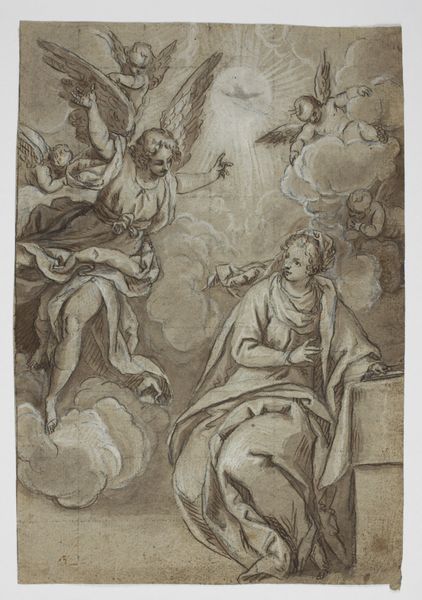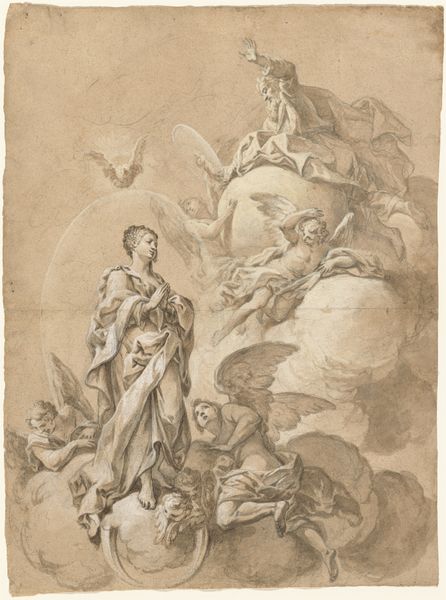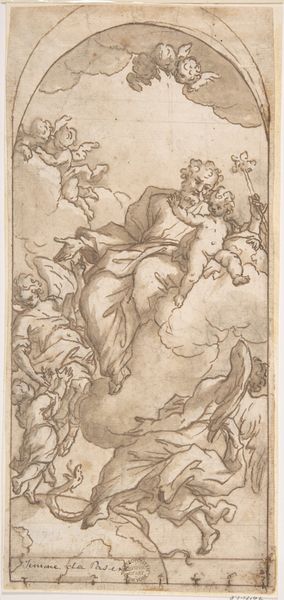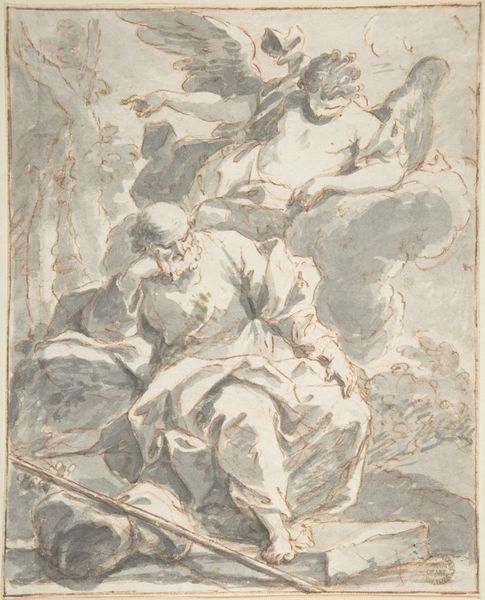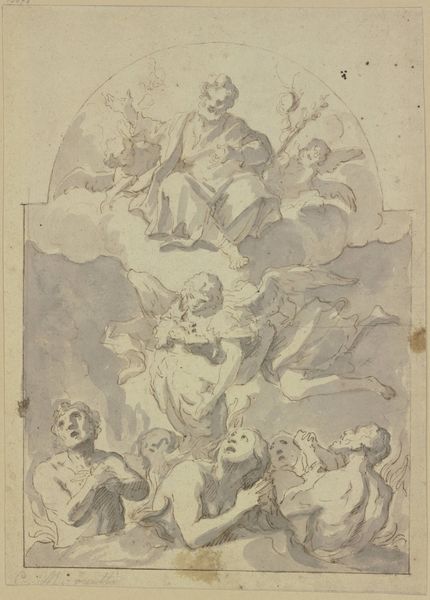
St Rosalia in glory with dying and running figures and a male half-length below 1647 - 1705
0:00
0:00
drawing, ink
#
drawing
#
ink drawing
#
baroque
#
ink painting
#
pen sketch
#
figuration
#
ink
#
history-painting
Dimensions: 261 mm (height) x 204 mm (width) (bladmaal)
Curator: Here we have Daniel Seiter’s drawing, "St Rosalia in glory with dying and running figures and a male half-length below," created sometime between 1647 and 1705. It’s an ink drawing, currently held here at the SMK. What’s your initial read? Editor: It feels…theatrical. Almost a stage design. The central figure, Rosalia, seems caught mid-aria, surrounded by a swirling vortex of emotion and death. There’s an undeniable drama to it, even in the sketch form. Curator: Exactly. The drama reflects a specific moment in Sicilian history, tied to Rosalia's role as a protector against plague. Seiter created this piece during a time when the memory of devastating plagues was very vivid. Rosalia became a powerful symbol of resilience and divine intervention. Editor: The figures below, the "dying and running," it’s a recurring motif in depictions of saints associated with plague. Saint Sebastian immediately springs to mind. But there’s a distinct visual language here. Notice the angel brandishing the sword. Curator: A crucial symbolic gesture! That’s divine power actively vanquishing disease, visualized in Baroque extravagance. Consider also the specific devotion to St. Rosalia in Palermo, how her relics were paraded through the city… This drawing engages with that political and cultural narrative. Editor: The line work almost vibrates with urgency. It captures the frenetic energy of both desperation and hope. It’s fascinating how these symbols resonate so powerfully, linking art to cultural memory. Curator: And to contemporary experiences. The vulnerability depicted—the fragility of life in the face of a pandemic—speaks across centuries, sparking discussion about how societies respond to collective trauma. Editor: It definitely hits different now than it would have pre-2020, I suppose. It’s a stark visual reminder of our own precariousness. A little unnerving. Curator: Art allows us to confront those discomforts and learn from history. It is important to view Seiter's sketch in its social and political context in order to better consider it's visual and metaphorical importance. Editor: Very well put, yes, I’m convinced. It serves as a strong emblem of our linked histories and enduring problems.
Comments
No comments
Be the first to comment and join the conversation on the ultimate creative platform.
